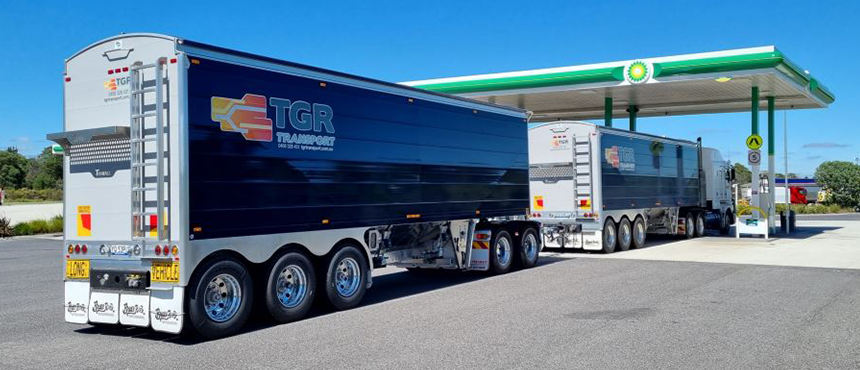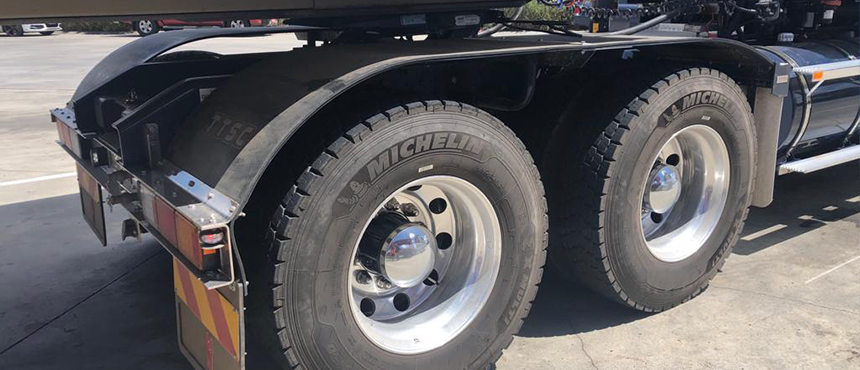Tyre Load Index?
As of 1 December 2022, the National Heavy Vehicle Regulator (NHVR) implemented generic tyres into the Performance Based Standards (PBS) scheme. This new scheme approximates tyre handling performance to be proportional to tyre load rating. As a result, tyre load index now influences PBS performance, where higher load indices positively affect results. To better understand tyre load index, we though we would put together a quick article to explain it.

Truck tyre load rating is a standardised measure of the maximum weight that a tyre can safely carry under specific conditions. Load rating is expressed as a code on the tyre sidewall that consists of a load index number and a speed symbol. The load index number is a two or three-digit code that corresponds to the tyre’s maximum load-carrying capacity (load rating). The higher the load index number, the greater the weight the tyre can handle. A table containing typical heavy vehicle tyre load indices and their corresponding load rating can be found at the end on this article.
As an example, pictured below is a Michelin 11R22.5 tyre fitted to the drive group of a prime mover, with a load rating of 148/145L.

Figure 1. Michelin X Multi D 11R22.5 tyres fitted to the drive group of a prime mover.
For this tyre:
- The first number (148) is the load index when fitted in single configuration.
- The second number (145) is the load index when fitted in dual configuration.
- The letter (L) is the speed index, which indicates that the tyre is rated to a maximum speed of 120 km/h.
The tyre load index in dual configuration is typically lower than that in single configuration, as there is a higher tendency for unequal load sharing due to unequal inflation pressures. This means that tyre manufactures use a higher factor of safety when specifying load ratings for tyres in dual configuration.
It should be noted that the load index of a tyre is determined based on the tyre size, construction, and other factors. Therefore, it is critical that the tyres fitted use load ratings which exceed that required by the axle group. Other factors, such as speed rating, rolling resistance, weather conditions, road conditions etc should also be considered so that operators select the right tyres for their needs.
Table 1. Tyre load indices and corresponding load rating
| Load Index | Load rating (kg) | Load Index | Load rating (kg) |
| 136 | 2240 | 147 | 3075 |
| 137 | 2300 | 148 | 3150 |
| 138 | 2360 | 149 | 3250 |
| 139 | 2430 | 150 | 3350 |
| 140 | 2500 | 151 | 3450 |
| 141 | 2575 | 152 | 3550 |
| 142 | 2650 | 153 | 3650 |
| 143 | 2725 | 154 | 3750 |
| 144 | 2800 | 155 | 3875 |
| 145 | 2900 | 156 | 4000 |
| 146 | 3000 | 157 | 4125 |
For more information and to discuss the effect of tyre load indices on your PBS combination, contact Advantia today.
Get more like this in your inbox
Subscribe to our Newsletter and never miss a post.